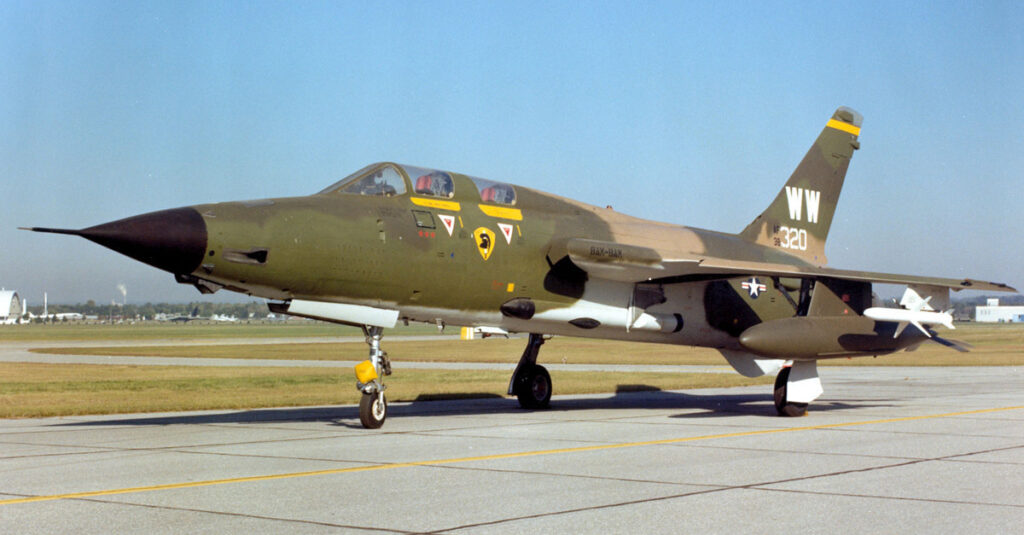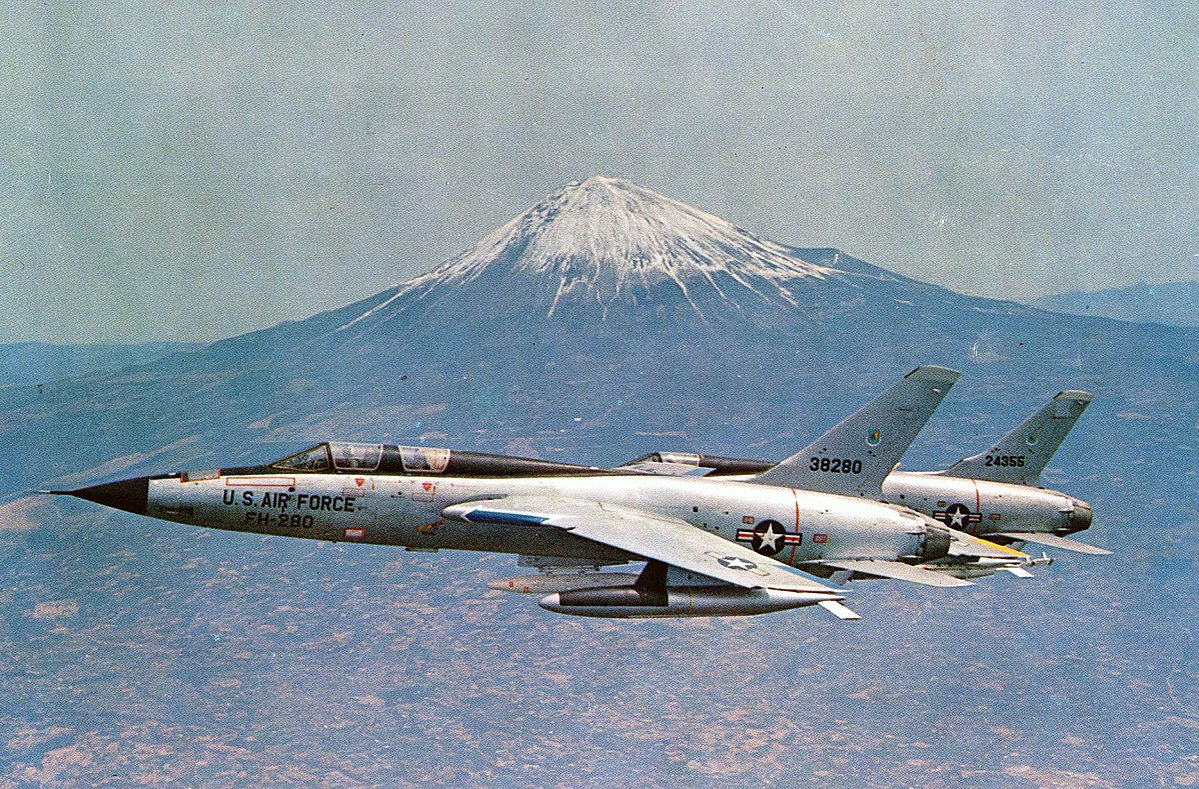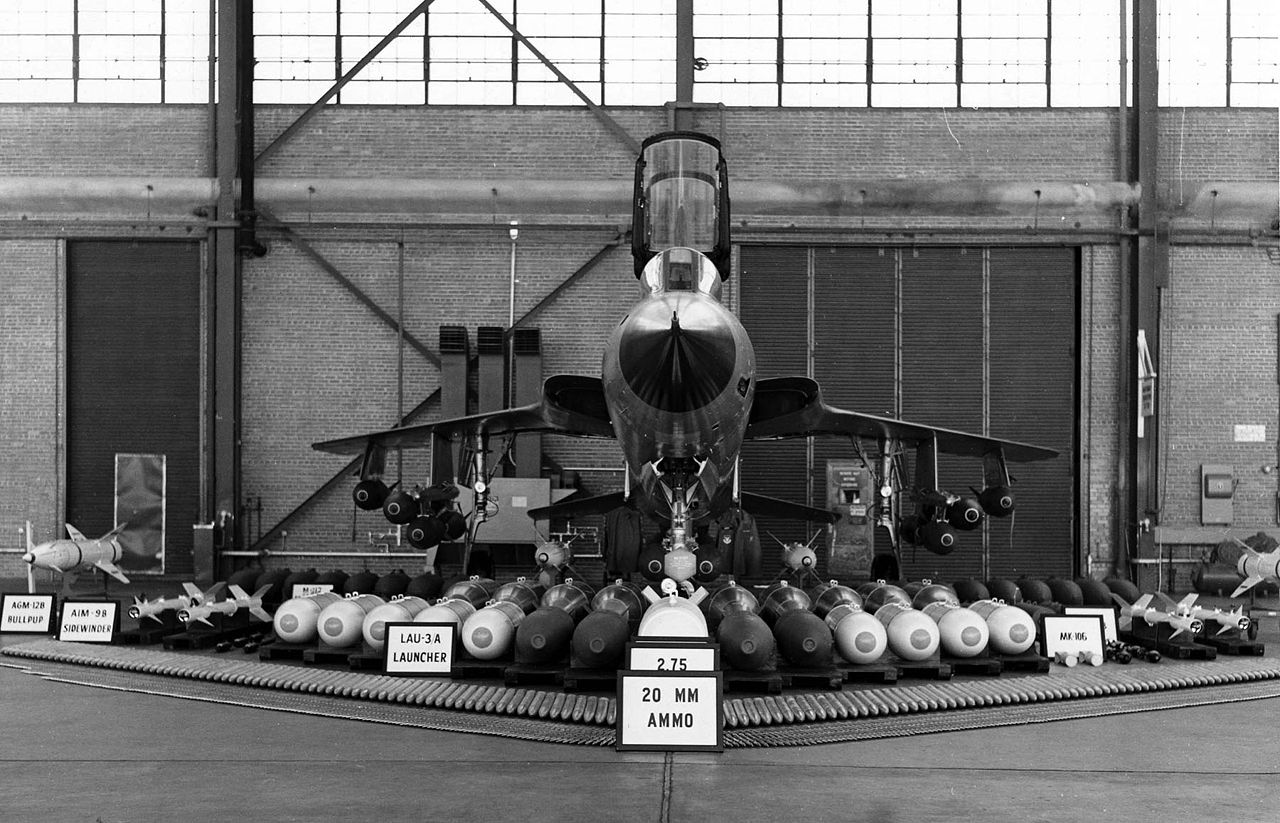
The F-105 Thunderchief was an extremely important Cold War-era fighter-bomber which served with distinction during the Vietnam War. The Thunderchief was the largest single-engined combat fighter ever built, capable of speeds of up to Mach 2.1 (1,400 mph). Its payload capacity was an impressive eleven tons, greatly improved by its tandem wheel main landing gear. The F-105 was one of the most capable air superiority fighters of its time and was considered to be the most heavily-armed, single-seat fighter-bomber ever developed.

The F-105 Thunderchief had an interesting history. It started its life as a nuclear bomber and ended its career as one of the most potent strike aircraft of the Vietnam War. The Thunderchief has achieved legendary status among military aircraft enthusiasts for its raw power and maneuverability in combat.
The F-105’s genesis began as part of the U.S. Air Force’s Strategic Air Command (SAC) in the 1950s. It was designed to be an all-weather, nuclear-capable, supersonic bomber that could penetrate deep into enemy territory and carry out its mission with impunity. However, the introduction of surface-to-air missile technology made the F-105 obsolete in the nuclear bombing role.
The aircraft was then adapted to the strike role and was assigned to the Tactical Air Command (TAC). The F-105 was an ideal candidate for ground attack missions as it possessed certain capabilities that no other airframe could match at the time. With a speed of Mach 2 and a maximum altitude of 60,000 feet, the F-105 was the only tactical bomber that could out-maneuver and outrun most of the air defenses of its era.

The Thunderchief’s unique combination of speed, altitude, and maneuverability earned it a fearsome reputation during the Vietnam War. The F-105 carried a variety of payloads, including bombs, rockets, napalm, and missiles.
The F-105 was designed around the GE J-75 turbojet engine, which could generate over 22,000 lbs of thrust. The military aircraft featured an internal forward fuselage fuel tank, greatly increasing its range. It also featured a tail-mounted thrust reverser, enabling it to stop quickly after take-offs and landings. The aircraft also carried four AIM-9 Sidewinder air-to-air missiles and four AIM-7 Sparrow air-to-air missiles, making it an effective air superiority fighter.
In the air-to-ground role, the Thunderchief could deliver up to 7,500 lbs of ordnance including conventional bombs, rocket pods, and two AGM-12 Bullpup missiles. The aircraft was quite maneuverable and could withstand a limited amount of battle damage. It could also be refueled in flight, making its long range capabilities